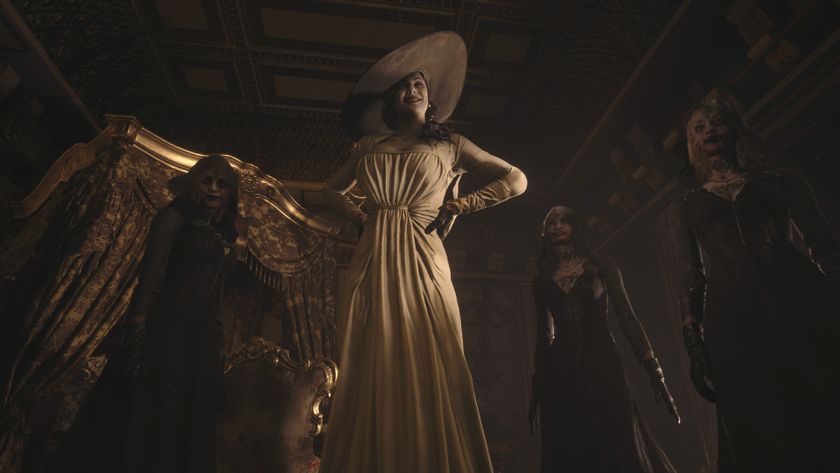Hostile Architecture: Resident Evil's Spencer Mansion wants to kill you
Why the Spencer Mansion in Resident Evil is the most famous haunted house in video games, 25 years on from its debut
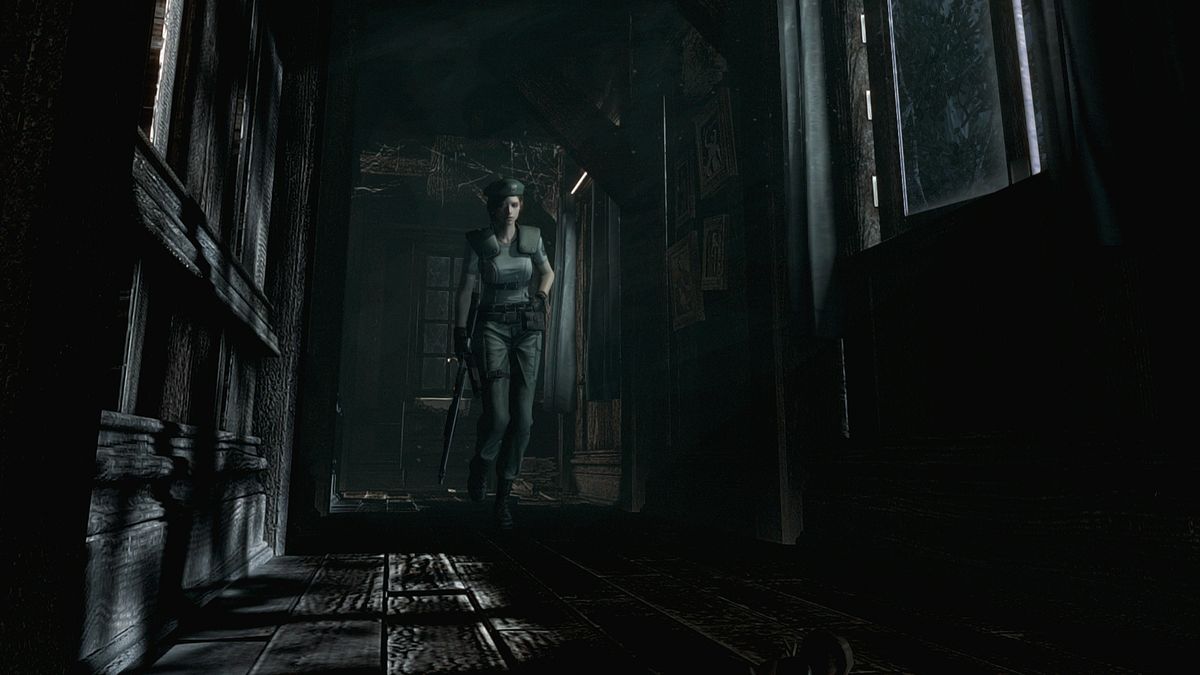
I recently discovered that there's more than one type of haunted house. The traditional kind is easily recognizable. It's a regular house, only one that at some point became possessed by an evil entity. A lot of the time, this entity – ghost, demon, poltergeist, whatever it may be – points back to some horrific trauma or atrocity. It's a very human haunting, one that leaks into the architecture of the building slowly and from the outside. The second kind of haunted house is much less common, but I think much more potent in terms of horror: Imagine a building born bad.
If you need help visualizing it, look towards The House of Leaves or the mansion from The Haunting of Hill House (the book rather than the TV series, which changes things significantly). With the second kind of haunted house, nothing has leaked in from outside. The evil entity is interior to the architecture itself. There's darkness in the very bricks and mortar. The place was bad from the ground up – haunted by design. When I think of this kind of building, I think of the original Resident Evil's "Spencer Mansion". While it's dim corridors are patrolled by the restless undead, it's a very materialist spin on old genre tropes. The zombies and hellhounds are the product of hard science – biological weaponry and manufactured viruses. Likewise, the mansion isn't so much haunted as it is purposefully designed and constructed to be malevolent. A material haunting.
A mansion in the dark
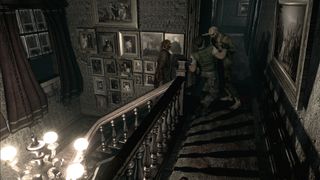
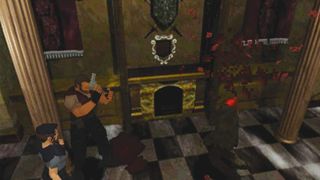
The complete history of the Resident Evil games: from the evolution of the mainline games to the weird and wonderful spin-offs
Spencer Mansion's fictional architect, George Trevor, is fundamental to the story of Resident Evil. Commissioned by Dr. Oswell E. Spencer, the game series' primal evil and founder of the Umbrella Corporation, Trevor builds a surreal, labyrinthine mansion somewhere in the Arklay Mountains. There are several factors that make the mansion an oddity. The first is that it was never built to be lived in, but instead created to antagonize respective intruders as well as obscure its true intent.
The real purpose of the mansion was a facade for the underground laboratory hidden below. It is out of this subterranean space that the T-Virus, and all those zombies, ruptured. The Spencer Mansion's malicious intent is clearly communicated early on. When people think back to their first scary moment in Resident Evil, they'll often recall their first encounter with a zombie, slowly turning to face us, having just gorged themselves on poor Kenneth. The other moment that comes to mind involves those dreaded window-dogs, suddenly bursting into our corridor from well out of frame. While there's definitely architecture involved in the orchestration of both these moments – cramped and claustrophobic corridors, windows that allow not just for the passage of light, but dog-attacks – when I think of the most memorable moment early on in our exploration of the mansion, I think back to the game's crushing ceiling trap.
By this point in the game you're well aware that there are things in the house out to get you, but the idea that the building itself wants to murder you is a new shock. If you haphazardly grab the shotgun in the preceding room (which let's be honest, trapped in a giant spooky house infested with zombies, who wouldn't) it triggers a trap in the small interceding room between the shotgun and main corridor. Similar to the garbage compactor from Star Wars, the walls and ceiling begin to constrict, only here the purpose isn't to neatly squash trash, but to turn you into a "Jill Sandwich" (as Barry Burton so astutely puts it).
The Spencer Mansion is filled with these kinds of ridiculously obtuse puzzles, as well as a labyrinth-like layout. In the 2002 remake, a new area is added – the Armor Key corridor. Like the ceiling trap, this is another instance of the building setting out to destroy you. If you grab the key from the plinth without replacing it, the corridor tightens, and a large stone statue moves towards you on a track. Like the previous ceiling trap, it only really works the first time you encounter it, but it's memorable nevertheless, as without foresight you're bound to be caught out. There are those few desperate moments as you fumble with the controller, attempting to look for an escape, before the statue's whirring blade-shield turns you into a Jill (or Chris) Soup.
Bad omens
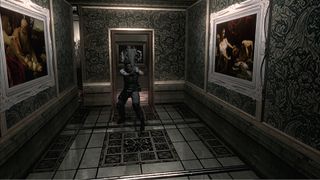
What's clear wandering the lurid rooms and hallways of the Resident Evil mansion, is how uncanny of a place it is; somewhere entirely unsuitable for human habitation. This sense is expanded upon in the remake. Recorded in different diary entries, Spencer is said to have used the mansion to entrap its architect, George Trevor, who along with his family is kidnapped and forced to live there. Suddenly the building's enigmatic foundation, its secret passageways and locked doors, turn against their creator. Trevor finally becomes lost somewhere in an unfinished area of the house, falling down a large inescapable pit. It's there that he discovers a grave stone upon which his own name is inscribed – a tragic architect forced to construct his own tomb.
Sign up to the 12DOVE Newsletter
Weekly digests, tales from the communities you love, and more
While the Spencer Mansion isn't sentient in the same sense as many other malevolent houses, its walls still radiate an uneasy kind of energy. There's the game's strange, ritualistic focus around doors and the opening of them. There's also the fixed camera angles that continually make it feel as though the house is watching you from a range of impossible angles. But what I love most about Resident Evil's architecture is how snugly the fiction of the mansion's construction mirrors what video game spaces are in essence meant to be. Level designers craft areas to block, frustrate, and antagonise us. In reality, a house's function is to be lived in, but the Spencer Mansion – like any good game level – is a machine for impeding us.
One of my favourite books on architecture, Geoff Manaugh's A Burglar's Guide to the City, asks us to imagine buildings in a new way – as obstacles. Suddenly a house or mansion becomes a kind of puzzle to solve, and we become a lot like burglars, attempting to figure out how to get in and bypass various barriers and deterrents. Resident Evil's Mansion, while not a supernatural entity, is very much this kind of obstacle – an antagonistic force and a place to be "outwitted and second-guessed."
The making of Resident Evil: series creator Shinji Mikami reflects on the making of a horror classic.
Ewan Wilson contributes long-form, in-depth features, interviews, and reviews to a variety of publications. While you can frequently find him waxing lyrical about the intersection between video games and architecture here at 12DOVE, he has also contributed to outlets like Edge magazine, Eurogamer, NME, Polygon, VICE, The Verge, Wireframe magazine, and so many more. His words can also be found in the fantastic gaming architecture zine Heterotopias.
